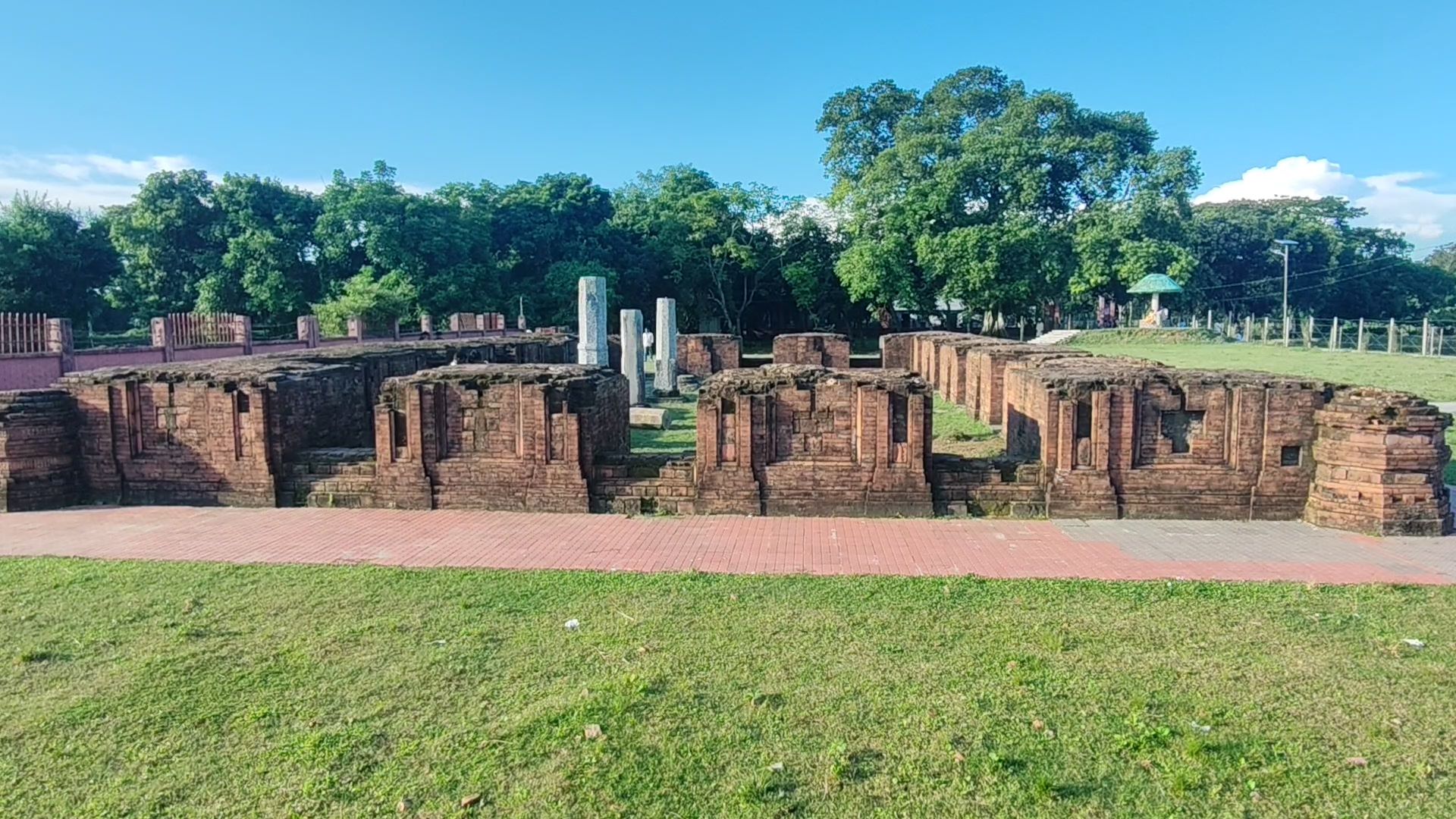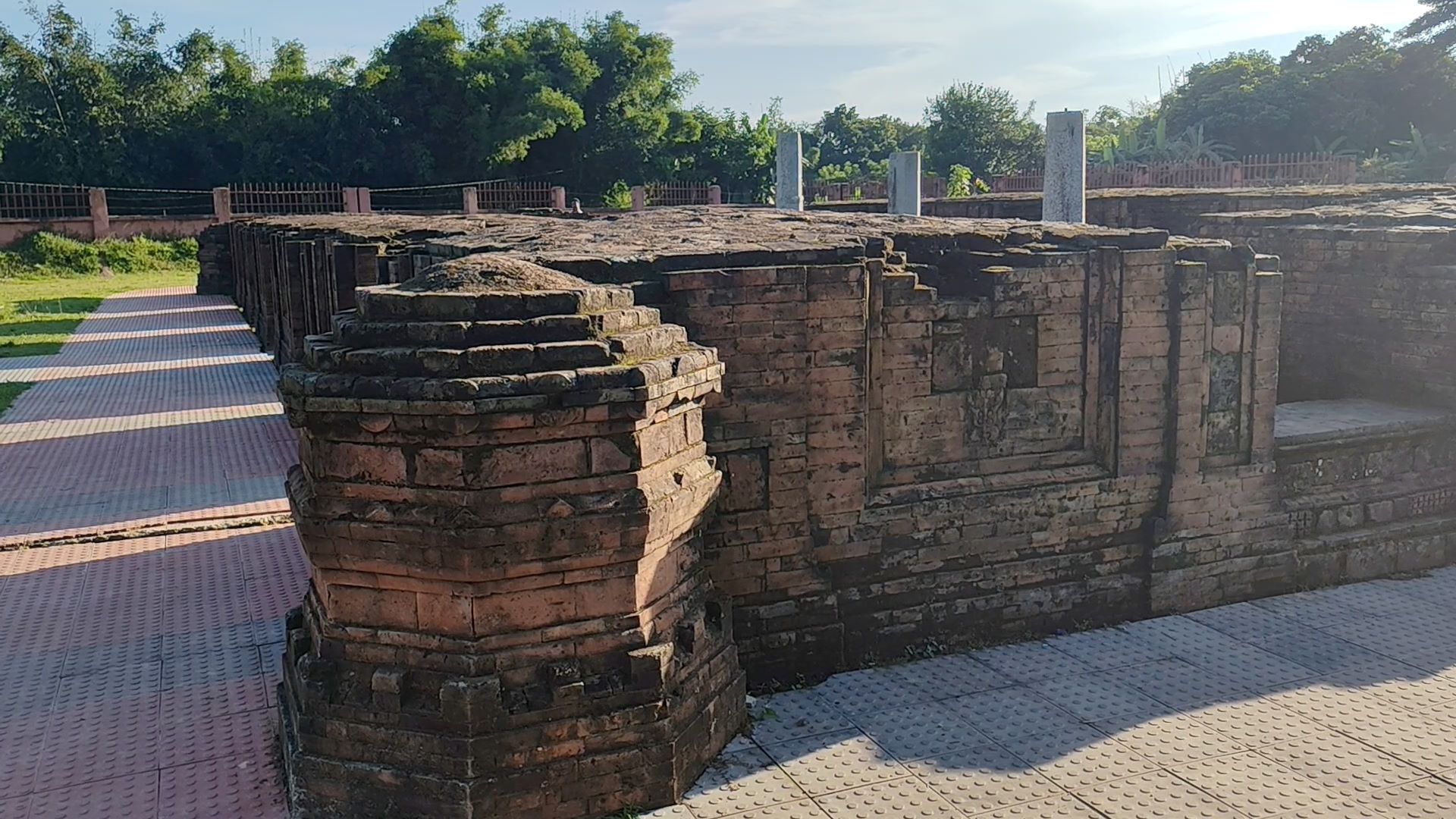News Flash

By Md. Tanvir Hayat Khan
NETRAKONA, Nov 27, 2025 (BSS) - The complete excavation of the ancient Royalbari Fort in Kendua upazila of the district could reveal remarkable new insights into the military and administrative history of medieval Bengal, according to archaeologists and local historians.
Considered one of the most significant archaeological structures in the region, the fort continues to draw visitors from across the country who come to witness the remnants of Bengal’s early rulers.
The Mymensingh Divisional Regional Office of the Department of Archaeology has confirmed that the structure dates back to the Sultanate period, though some believe it may have been built by a Mughal commander.
Historic references, including Kedarnath Majumdar’s Mymensingher Itihas O Bibhaga, suggest that Isha Khan, leader of the Baro Bhuiyans, once conquered the Nasirujial Pargana and Royalbari—a settlement then enclosed by fortified walls.
Royalbari Fort first came to light in the 1980s and was declared a protected archaeological site in 1987. Excavations conducted between 1991 and 1994 and again in 2016–2017 uncovered key structures including the main gate (known as the “lion gate”), two mounds, a mosque, ponds, and a fortified boundary wall.
Artifacts such as pottery, stone fragments, tiles, terracotta-decorated bricks, iron tools, and geometric motif–engraved stones were also recovered.
Archaeologists believe the fort was established around the late 14th or early 15th century, with significant expansion under Sultan Nusrat Shah, son of Alauddin Hussain Shah. Later, the fort likely came under the control of Isha Khan and subsequent local rulers.
Covering 46 acres, the fort stretches 533.23 meters north to south and 327.57 meters east to west. It includes a pond, two mounds, a cemetery, and the ruins of multiple ancient buildings. Excavations in 2022–23 at Dengu Mia and Niamat Bibi’s Mazar—identified by government gazette as archaeological mounds—revealed further structural remains thought to date back to the same period.
Researchers suggest that Royalbari Fort served as a military outpost during the late Sultanate and early Mughal periods. Its strategic riverside location along the Betai River indicates that it may have played a role in controlling river-based trade routes and defending the region from pirate attacks.
A parade ground, moats, tunnels, watchtowers, and fortified walls point to extensive military planning.
Former Assistant Director of the Department of Archaeology Mahbub ul Alam said the architectural style and recovered artifacts indicate that the fort is nearly 700 years old. “It was likely an outpost of the army or infantry,” he said.
The ruins reveal a complex multi-part layout, including two large ponds with paved ghats, two moats, a tower, a twelve-door mound, a tunnel, and a mosque believed by some to be the historic Masjid-e-Jalal, built by Dewan Jalal.
Local historians note that after Sultan Alauddin Hussain Shah conquered the kingdom of Kamrup in 1498 AD, his son Nasrat Shah ruled the region until he was driven out by enemy forces.

Fleeing eastward, he is believed to have taken refuge in Royalbari, renaming the area “Nasrat o Jial” or “Nasrat Ajial.” The surrounding province later became known as Nasratshahi Pargana—its name continuing until the reign of Emperor Akbar.
Writer and researcher Ali Ahmed Khan Ayyob argues that Royalbari, along with the Tajpur, Pukhuria, and Betam forts, was originally built to safeguard the water-based settlements of the region from pirates. “From our observation, it appears that the entire Royalbari region may have been a large fort,” he added.
Kendua Upazila Nirbahi Officer Imdadul Haque Talukder stated that as a protected site, Royalbari Fort falls fully under the jurisdiction of the Department of Archaeology. “The upazila administration will continue to support preservation efforts,” he said.
Afroza Khan Mita, Regional Director of Archaeology for Dhaka and Mymensingh, confirmed that a new project—Renovation, Conservation and Development of Archaeological Sites in Mymensingh Region—will begin within the next two years to conduct further excavation. “Once we analyze all findings, an action plan for renovation, conservation, and exhibition will be undertaken,” she said.
The site has already undergone partial conservation, boundary wall construction, and development of adjacent areas such as the Baroduari Mosque. Materials uncovered during excavations, including bricks and stones, are currently preserved for display.
Experts believe that a full excavation could reveal an extensive military network in eastern Bengal and shed light on the region’s political structure following the rise of Isha Khan.
They argue that the complete excavation may reveal that not just the core area but the entire Royalbari village once functioned as a fortified settlement.
As anticipation builds, the Royalbari Fort continues to stand as a silent witness to centuries of Bengal’s history—its full story waiting to be unearthed beneath the soil of Netrakona.